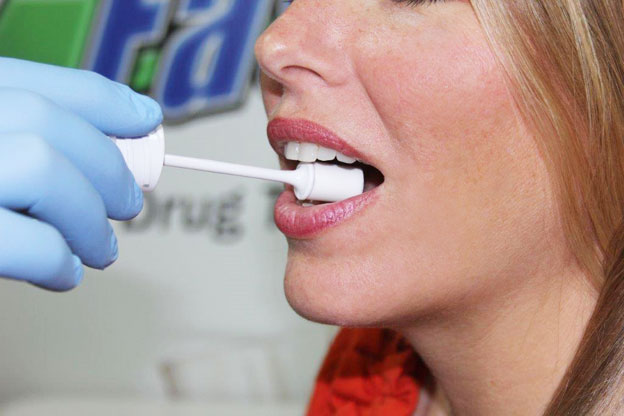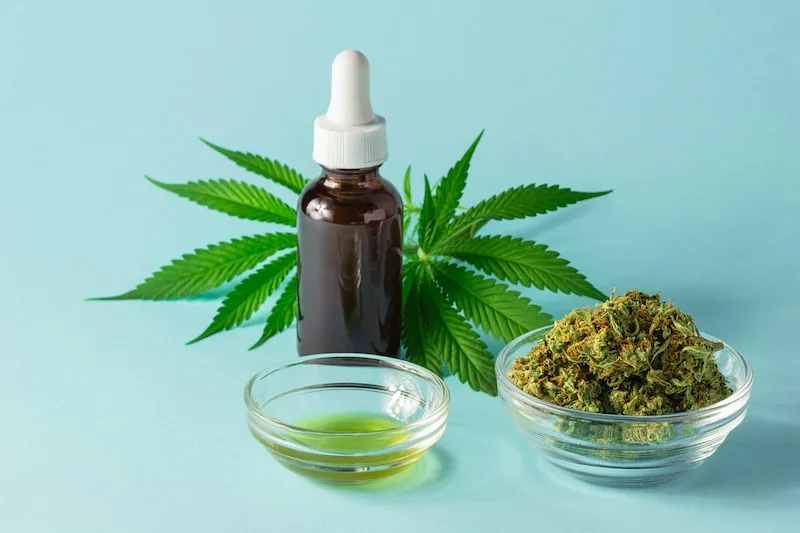Cannabidiol (CBD) has emerged as a compound of great interest in recent years. However, with its growing popularity, important questions are being asked about its detection in the body, particularly for those who have to undergo drug tests in the workplace or in a legal context. One of the most frequently asked questions is this: how long CBD remains in saliva?
This question is linked not only to confidentiality and legal reasons, but also to a better understanding of how the body processes this compound. Like THC and other cannabinoids, the CBD can be consumed in different forms, leaving traces in the body. Hair, blood and saliva are places where cannabinoids tend to persist after cannabis consumption.
In this article, we will focus on explaining how and for how long the CBD remains in saliva.
Le CBD (cannabidiol) can remain in the body, including in saliva, for a certain period of time, depending on a number of factors such as dose, frequency of use and how the body metabolises the substance.

Duration of CBD presence in saliva
CBD can generally be detected in saliva for approximately 24 to 72 hours after use. However, this time may vary depending on:
Dose: The higher the dose, the longer CBD remains in the body.
Frequency of use: If you use CBD frequently, it can build up in the body and last longer.
How to use it: CBD consumed by oil, tablet or vapour can have different durations of presence.
Individual metabolism: Each person has a different metabolic system, which affects the rate at which CBD is eliminated from the body.
Advice for CBD users
Drug interaction: CBD can interact with certain medications, so it is advisable to consult a doctor if you are taking other medicines.
Driving and use of machinery: Although the CBD does not have a psychoactive effect like THCHowever, it can still cause side effects such as fatigue or drowsiness. Use caution when driving or operating machinery after consuming CBD.
Product quality: Buy CBD from reliable sources to avoid impurities or other undesirable ingredients.
Appropriate dose: Start with a low dose and gradually increase until the desired effect is achieved to avoid undesirable side effects.
Checking legal regulations: CBD may be regulated differently in different regions, so make sure you comply with local laws.
Methods for detecting CBD in the body
CBD can be detected in the body by various methods, depending on the type of sample used and the purpose of the test. Here are some common methods:
Blood test
Blood tests can detect CBD a few hours to a few days after use, depending on the dose and frequency of use. However, this method is less common because it is invasive and impractical for routine testing.
Urine test
Urine tests are generally used to detect substances such as THC, but can also be used to detect CBD in certain cases. However, CBD is often not tested in standard tests unless specifically requested.
Saliva test
The saliva test is a non-invasive method that is easy to perform. CBD can be detected in saliva approximately 24 to 72 hours after use.
Hair test
Hair tests can detect presence of CBD over a longer period, generally several weeks to several months after use. This method is less common and is often used in specific cases.
Notes on CBD detection
Not common in standard tests: Most standard drug tests do not look for CBD as it has no psychoactive effect and is not regulated as strictly as THC.
Risk of confusion: Some CBD products may contain small quantities of THCThis can lead to positive results in standard drug tests.
If you are concerned about detecting CBD in your body because of your job or for other reasons, check the product label and consult your supplier or a healthcare professional.

Precision and procedure of the saliva test for CBD
The accuracy of the saliva test for CBD
More details: The saliva test for CBD is fairly accurate, but the results can be influenced by factors such as the sampling method, the time elapsed since use and the quality of the test kit.
Sensitivity and specificitySaliva tests are generally very sensitive and can detect a wide range of substances. low concentrations of CBD. However, detecting CBD specifically can be complex as many standard tests are not designed to detect CBD but focus on THC and its metabolites.
Influence of external factors: Factors such as diet, oral hygiene and the time elapsed since use can affect CBD concentrations in saliva and therefore the accuracy of the test results.
Saliva test procedure for CBD
Preparing the test kit: The saliva test kit generally includes a swab and a storage tube. The kit must be sterilised and properly stored before use.
Taking a sample: Ask the person being tested not to eat, drink, chew gum or smoke for at least 10 to 30 minutes before taking the swab. The person being tested holds the swab and places it in the mouth, rubbing it gently against the inside of the cheek for approximately 1 to 2 minutes to collect enough saliva.
Sample storage: Place the swab in the storage tube and seal tightly. Label the sample with the necessary information such as name, date and time of collection.
Sample analysis: The saliva sample is sent to the laboratory for analysis. The laboratory uses methods such as gas chromatography-mass spectrometry (GC-MS) or liquid chromatography-mass spectrometry (LC-MS) to identify and analyse the saliva sample. measure CBD concentrations.
Results: Results are generally available within a few days, depending on the laboratory and the method of analysis. The results will indicate the concentration of CBD in the saliva sample, making it possible to determine whether or not CBD is present.
Advice for test subjects
Time of sampling: The timing of the sampling is crucial because the CBD generally remains in saliva for 24 to 72 hours.
Pre-test preparation: Follow the instructions not to eat, drink or smoke before sampling to ensure accurate results.
Choosing a laboratory you can trust: Make sure the test is carried out by a reputable laboratory using precise analysis methods.
Conclusion
In general, it is considered that CBD can be detected in saliva up to 72 hours after consumptionalthough this period may be shorter or longer depending on the specific cases discussed above.
In addition, although saliva tests are effective in detecting presence of CBDIt is important to understand that not all tests differentiate between the CBD from other cannabinoids, such as THCwhich has legal implications.
Drug tests for cannabis used in law enforcement specifically look for the presence of THC. However, full-spectrum CBD products can contain up to 0.2% of THC. This means that excessive consumption of these products can lead to a positive screening test result.
The best way to prevent this is to avoid full-spectrum CBD products or to allow 72 hours to pass between consumption and driving. Another option is to switch to CBD products or isolated CBD products, such as electronic cigarettes and e-liquids, because they do not contain THC.
And finally.., Mariswiss CBD would like to remind you once again that not all forms of consumption are authorised for all people. CBD products. Oils and creams should only be used topically, flowers and resins should only be used for decoration and aromatherapy, while electronic cigarettes and e-liquids should only be used for inhalation. Other forms of consumption or use are considered to be misuse of the product by the user.

